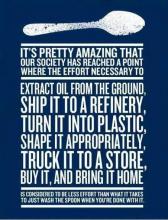Permaculture Principle #11: Use Edges and Value the Marginal
"Don’t think you are on the right track just because it is a well beaten path"
Commentary by Tim Sonder, Edible Evanston (November, 2019)
The interface between things is where the most interesting events take place. These are often the most valuable, diverse and productive elements in the system.
Think of the ocean, and then look at tide pools and marshes. Where do you see a greater diversity and density of life? Look at a forest, and then study the area where it transitions to meadow or lake or stream, and you will, once again, find a greater diversity.

